LED PCB
The Relationship Between LED And PCB
Printed circuit board is an important invention in circuit technology, which can realize complex and large-scale circuit laying with less space and materials. Like other semiconductor devices, PCB is the best way to electrically connect LED components. The PCB soldered with LED components is usually called “LED PCB”. PCB technology affects our daily lives in many ways. LED PCB also came into being with the rapid development of the printed circuit board industry.
JHD LEDPCB Product Display:
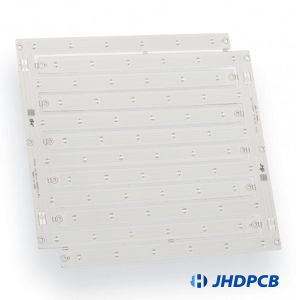
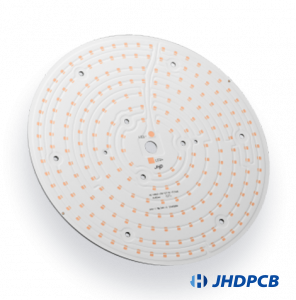
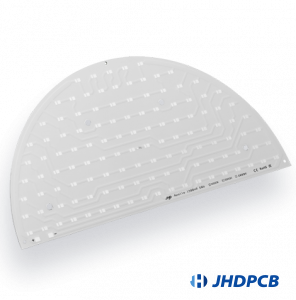
Comprehensive Understanding Of LED Printed Circuit Boards
LED is an abbreviation for Light Emitting Diode. An LED is essentially a two-lead semiconductor device that emits light when current is passed in a certain direction. The birth of LED lighting has changed the traditional lighting method, and it has quickly entered thousands of households with its advantages of high brightness and energy saving. Modern LEDs not only provide high-intensity, very bright light, but also have different uses in different scenarios, such as panel light, down light for home lighting, grow lighting, car lights, street lights, traffic lights, strip light for commercial lighting , etc.
Solder the LED chip to the PCB board, and after the power is turned on, the LED chip will emit light, thereby forming an LED PCB. LED PCB is the core of LED lighting, LED printed circuit boards generate a lot of heat than other electronic parts during operation, making it difficult to cool by traditional methods, which requires PCBs to have better heat dissipation capabilities. Metal bases with the ability to dissipate heat quickly have proven to be a better choice. Generally, whenever a led PCB is designed, an aluminum PCB is preferred. Aluminum PCBs usually include a thin layer of thermally conductive dielectric material, which can transmit and dissipate heat at a higher efficiency than traditional rigid PCBs. At the same time, it is more cost-effective and lighter than other metal core PCBs, and can transfer heat more efficiently than traditional rigid PCBs. Some low-power lighting, for portability and better insulation, also use FR4 PCBs.
In addition to general lighting, led PCBs can also provide visible light, infrared light and ultraviolet light, which are commonly used in LED grow lights.
JHDPCB is the top five LED PCB manufacturers in China, With top-notch first-class equipment, rich production experience and huge cost advantage, our large-scale production allows customers to obtain the most cost-effective LED PCB. In this article, we would like to introduce in detail what is LED PCB, LED circuit board manufacturing and materials, printed circuit board applications, etc.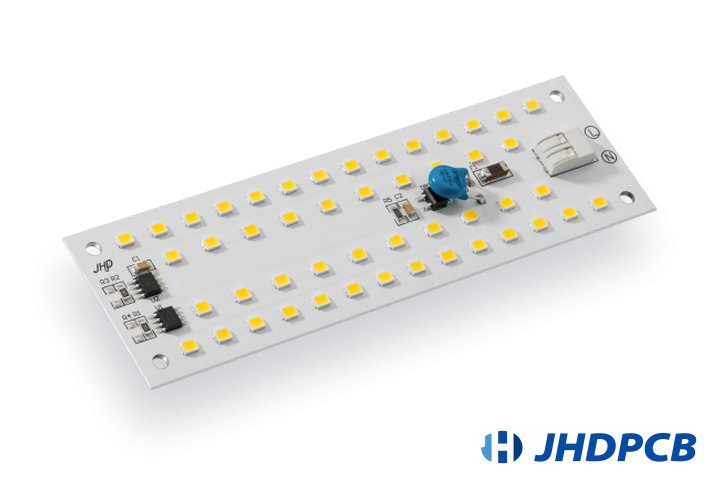
Introduction of LED PCB
LED PCB has many other names such as LED PCB, LED Print Circuit Board, LED Circuits, LED Board, etc.
LED PCB is the soul of LED lighting, the quality of the PCB board determines the display effect and life of LED lights.
The circuit design of LED PCB is relatively simple, usually choose single-sided or double-sided circuit board. According to the power of the led lighting, the current and the assembly requirements, the customer chooses different PCB thicknesses and copper thicknesses. There are also different surface treatment processes for PCB. Like OSP, LF-Hasl, ENIG. For details, please refer to our BLOG about surface treatment and choose the suitable process for you.
Production And Materials Of LED PCB
LED PCB is processed and manufactured on the basis of copper clad laminate. The main production processes are copper circuit etching, coating solder mask and so on. White solder mask is commonly used in LED PCB, because white solder mask has high reflectivity, which can improve the lumen of lighting. JHDPCB innovatively uses milky white solder mask in the industry. This kind of solder mask has a high reflectivity up to 97%,can withstand high temperature without cracking, and the color of solder mask does not turn yellow after reflow oven. Currently, well-known brands lighting such as Philips and Osram are use it.
The materials used in LED PCB are mainly aluminum, FR4, CEM1 and CEM3, etc. Aluminum-based PCBs are the first choice because of their enhanced heat dissipation capabilities. The thermal conductivity of the aluminum substrate is composed of a thermally conductive dielectric layer, and the thermal conductivity of the PCB produced by JHDPCB can reach up to 10W/m.k.
FR4 materials are also used in LED PCBs, especially in some low-power lighting or lighting with higher insulation requirements. FR-4 PCB is a glass fiber base material covered with a layer of copper foil. It has the advantages of light weight and good electrical insulation. The disadvantage is that it has almost no heat dissipation capacity. CEM1 and CEM3 are a combination of cardboard and glass fiber. The characteristics are similar to FR4, but the dimensional stability is relatively poor. The advantage is that they are cheaper than FR-4 and are used in some relatively low-end lighting.
In recent years, flexible PCBs have also shined in the field of LED strips. Since LED light strips need to be bent or folded in various irregular corners, the excellent flexibility of flexible PCBs helps them achieve this goal. The variable malleability of the flexible PCB helps the light bar change angle at any corner. For more information on the relationship between FPCB and LED strips, please read the article “Why Is FPCB An Important Part Of LED Strips?“.
JHD PCB cooperates with world-renowned manufacturers to stock copper clad laminates of various materials for a long time, which can shorten the delivery time. Please refer to our standard delivery time.
JHDPCB Production Plant:
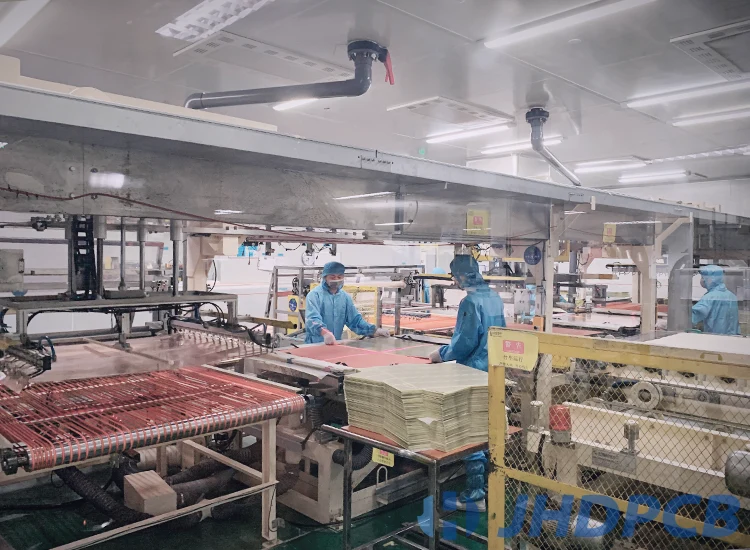
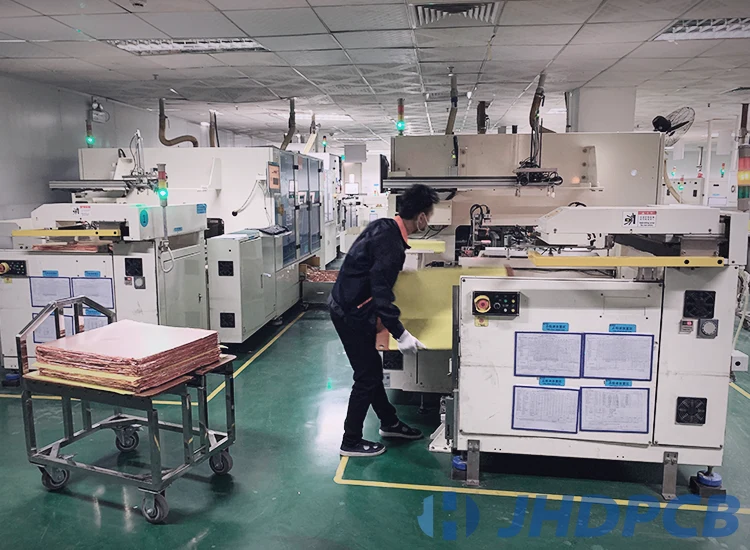


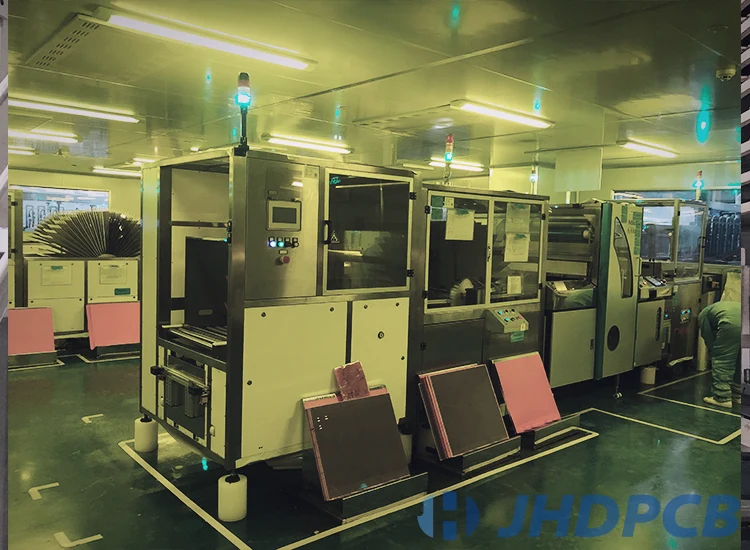

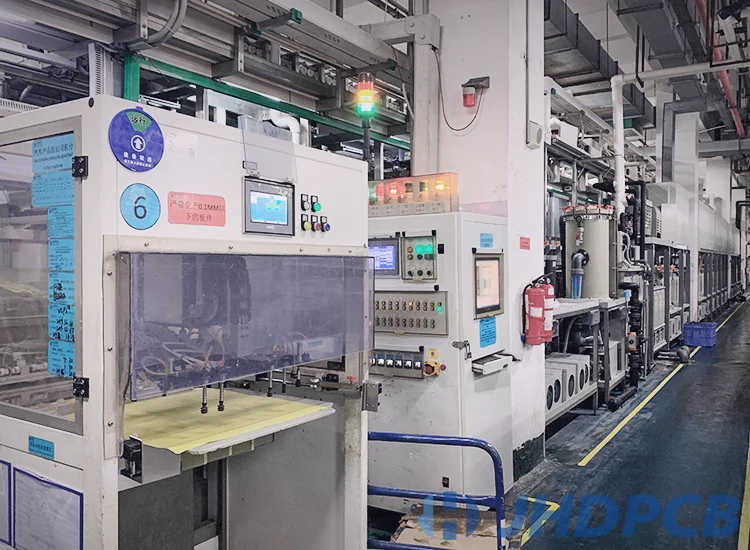

To learn more about LED PCB knowledge and our advantages in LED PCB manufacturing, please go through our LED PCB product page to learn more. For other pcb manufacturing related questions and needs, please feel free to contact us, we will use our advantages and professional attitude to give the best suggestions.





